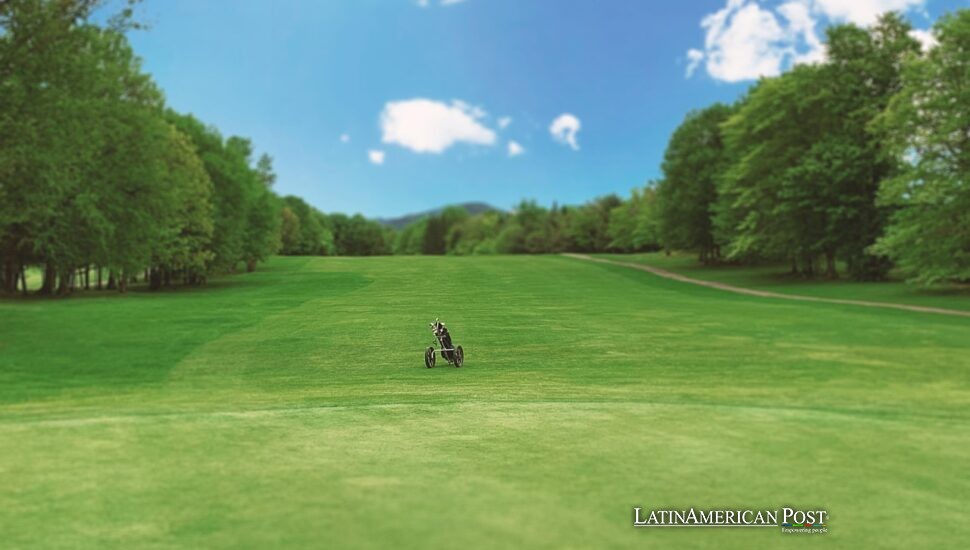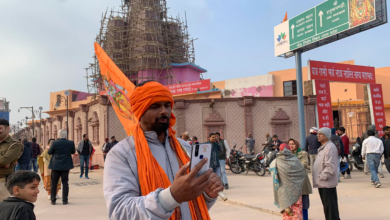Discovering South America's Finest Golf Courses

From Argentina’s iconic Jockey Club to Brazil’s Olympic spectacle, South America’s golf scene abounds in storied fairways and fresh designs. As architects from MacKenzie to Hanse have left their mark, each course offers a journey into diverse and dramatic landscapes.
A Legacy Rooted in Alister MacKenzie
South America links to golf design through Dr. Alister MacKenzie, a master architect who shaped many courses. The man who crafted Augusta National and Cypress Point left a lasting mark on the continent’s courses. In the early twentieth century, when Argentina’s economy soared and affluent patrons sought to import golf culture from Europe and North America, MacKenzie was commissioned to work on two courses for The Jockey Club. That single assignment proved pivotal in establishing a design benchmark across the continent.
The Jockey Club’s Red Course, set near Buenos Aires, was so polished that some believed it might have merited a spot on a top-100 list in its prime. The design brilliance that marked MacKenzie’s American golf courses also shaped one unique layout in Argentina. Local players felt honored to host a course that matched the caliber of respected clubs in Britain or the United States. MacKenzie’s influence extended past Argentina’s borders and into Uruguay, along with proposed plans for Venezuela’s landscapes. His work inspired a new generation of golf architects to discover South America’s remarkable natural features.
That legacy inspired others. While the Old World and the United States saw waves of architects crisscrossing land to sculpt new greens and bunkers, fewer luminaries arrived in South America during the sport’s early expansion. The region drew visionaries like Stanley Thompson, who traveled to Brazil in the 1930s, along with Robert Trent Jones, who created El Rincón, a notable course near Bogotá. Dick Wilson, who shaped midcentury golf design, also worked in Venezuela and set a path for designers like Tom Fazio, Jack Nicklaus as well as Arnold Palmer. These architects saw South America as more than a secondary market – they found a clean slate of striking terrain that allowed fresh hole designs outside standard rules.
The work of these designers led to a web of courses across mountain cities, shorelines, or dense forests. A few remain secret spots that deserve wider notice. Others stand out through major competitions. But each course shows MacKenzie’s original approach, which mixes smart sand traps with natural paths, besides local touches from each country. This creates a mix of golf settings that stand apart from other places.
Regional Classics: Argentina and Beyond
A closer look at golf in South America reveals Argentina’s excellence in the sport, which is equal to its fame in football or polo. The country features remarkable courses from various eras. Buenos Aires presents many golf opportunities at locations such as Argentino Golf Club. Its fairways display the local dedication to golf. The Jockey Club gets more attention, yet Argentino draws devoted players who enjoy the shade of mature trees and refined greens. The course layout rewards careful planning or precise shots.
Further west, Club de Campo Mendoza introduces golfers to a more arid, wine-country environment. Situated near the Andean foothills, this setting merges challenging shot values with the region’s renowned Malbec culture, so a round of golf might end with sipping local vintages. At El Desafio Mountain Resort, golfers face the rugged grandeur of Patagonia. Here, the region’s dramatic peaks form a constant backdrop to sloping fairways and windy conditions that test even the steadiest swings. The Argentine portfolio, from city layouts to remote mountain retreats, reflects the nation’s broad topographical variety.
Several countries near Argentina have created classic golf courses. Bolivia’s La Paz Golf Club in Aranjuez sits at an elevation that unexpectedly affects play. The thin mountain air lets golf balls travel longer distances but winds from the Andes require players to choose clubs carefully.
Uruguay, a modestly sized country with a rich sporting tradition, hosts the storied Golf Club of Uruguay, sometimes called the Uruguayan seat of MacKenzie’s influence. Though he was primarily involved in Argentinian and Venezuelan designs, MacKenzie’s spirit resonates here. With tree-lined corridors and a subtle sense of strategy, the course is a testament to the region’s once-thriving 20th-century economy and the wave of architectural attention it commanded. Meanwhile, visitors to Uruguay also find Carmelo Golf Club, a scenic layout perched near the Río de la Plata, and Cantegril Country Club in the coastal destination of Punta del Este—both beloved escapes where sun, sand, and fairways combine.
Several other nations might not receive the same global focus but offer interesting attractions for the curious golfer. Paraguay’s Resort Yacht & Golf Club near Asunción incorporates water hazards that test nerves under the region’s tropical sun. Peru’s Los Inkas Golf Club in Lima marries top-notch landscaping with city convenience, allowing players to escape the capital’s bustle. Even Suriname’s Paramaribo Golf Club or Guyana’s Lusignan Golf Club, while lesser-known on the world stage, allow enthusiastic local communities to explore the sport in their backyard.
Brazil’s Modern Marvels
No discussion of South American golf can omit Brazil, the continent’s largest nation and a hive of sporting passion. Over the decades, Brazil’s golf scene has blended historic clubs with modern projects that captured global attention. Rio de Janeiro, for instance, claims Gávea Golf and Country Club, a scenic property that weaves around the base of forested hills. Traditional in its membership vibe but dramatic layout, Gávea sits close enough to the sea for breezes to shape a round’s strategy.
In the same city stands the Rio Olympic Course, a Gil Hanse project that propelled Brazilian golf into the spotlight during the 2016 Summer Olympics. Built to host the sport’s long-awaited return to the Games, this layout embraces a links-style design and remains open to the public under specific guidelines. Minimal water hazards and bold bunkering define many holes, and the ocean winds can be punishing. Today, the Rio Olympic Course is an emblem of golf’s ongoing globalization, proving that a region once overlooked by traveling pros now has the infrastructure to host world-class events.
Yet Brazil’s variety doesn’t end there. The Terravista Golf Course in Trancoso, Bahia, pairs cliffside vistas with well-maintained fairways that roll out beneath coconut palms. Golfers who favor a relaxed setting steeped in tropical flair love Terravista’s blend of ocean views and technical challenges. Meanwhile, São Paulo Golf Club anchors the city’s golfing tradition, offering a refined atmosphere in Brazil’s economic epicenter. That backdrop of skyscrapers might seem far from the subtropical landscapes along the coast. Still, the course’s tight corridors and exacting greens remind visitors that beauty and difficulty coexist in an urban environment.
Another name that surfaces in hushed, reverent tones is Santapazienza Golf Club, located in Itatiba. This exclusive retreat invites only the truly dedicated, with holes that reflect thoughtful architecture by designers who appreciate the undulating terrain. The Santapazienza course requires precise shot placement through its crafted bunkers and water elements.
Brazil’s golf extends past famous clubs into remote areas where inventive locals turned farm fields or hillsides into simple but lively courses. The country’s sheer size ensures that each region fosters a slightly different approach—some might emphasize environmental stewardship, planting native flora, and constructing holes with minimal disruptions to natural habitats.
The Growing Appeal Across the Continent
South America’s mosaic of courses continues to broaden from the high-altitude fairways of Quito Tennis & Golf Club in Ecuador to the wind-swept corridors of Patagonia Virgin Golf Club in Chile. The game still maintains roots in exclusive clubs that serve affluent locals or people who live abroad. A notable change toward openness has occurred over time. Public facilities and tourist spots now welcome everyday players who wish to mix their holidays with golf rounds in scenic locations. This push coincides with a surging middle class in certain areas and an expanding interest in sports tourism overall.
Chile, for instance, has seen clubs like Los Leones Golf Club in Santiago capture urban enthusiasts, while Patagonia Virgin Golf Club wows visitors seeking an extraordinary natural backdrop. Chile’s narrower shape and robust latitudinal span allow courses to exist in Mediterranean-like climates and the raw splendor of the far south. Another local gem, Prince of Wales Country Club, reveals the country’s British influences, weaving subtle design quirks that test the short game. Meanwhile, Rocas de Santo Domingo Golf Club, composed of two nines labeled Red and Blue, overlooks the sweeping coastline near Santo Domingo, adding dramatic ocean breezes to the round.
Colombia perched where the Andes snake through tropical valleys, also boasts an array of intriguing tracks. TPC Cartagena at Karibana embraces coastal beauty, with some holes hugging the Caribbean Sea. El Rincón Golf Club near Bogotá, a Robert Trent Jones creation, challenges golfers at altitude—thin air can send drives soaring but also demands careful shot control. This same approach applies at Ruitoque Golf and Country Club, which offers panoramic views of Santander’s canyons, ensuring that every par 3 feels like a flight across a chasm.
Even lesser-known corners show the sport’s unexpected reach. In Bolivia, La Paz Golf Club enthralls adventurous players with the swirling winds of the high plains. Over in Venezuela, Caracas Country Club stands as a historical fixture amid the tumult of a nation that has faced political and economic trials. Suriname’s Paramaribo Golf Club and French Guiana’s Anse Golf Club represent expansions of the sport into places rarely associated with fairways. The Falkland Islands has a nine-hole course in Stanley, which proves how golf adapts to new places. The clubs may not match pristine courses or famous designs in other regions, but they create a core group of devoted players who help golf thrive in far-off places.
The blend of courses across the land shows how golf grew and its power to fit into different cultures. In some nations, foreign architects introduced grand visions that placed the region on the global map. In others, local designers and club members shaped golf to fit the land, employing minimal earth movement or innovative drainage solutions to handle tropical downpours or mountainous terrain. The result creates a mix of experiences: players hit drives under an Amazon sun, face wind currents in the Andes as well, and deal with ocean gusts on both the Atlantic and Pacific coasts.
Every few years, major competitions like the Olympics and big tournaments show how South American golf could draw more attention from sports fans. The success of local players on international tours further ignites curiosity about the courses that nurtured them. Observers predict that as South America’s infrastructure continues to develop—improving roads, more widespread tourism services, and more excellent cross-border collaborations—the region’s best fairways will become increasingly accessible to global travelers.
At the heart of all this stands a sense of possibility. Despite centuries of sporting traditions, golf in South America still feels like a frontier in many respects—untapped landscapes, underrepresented global rankings, and hidden havens that reveal themselves only to the dedicated explorer. Serious golf pilgrims might arrive at these courses expecting rawness or unpredictability, only to find the same sense of challenge and architectural flair that define the world’s top links. People often feel attracted to experiencing different cultures and local food and creating connections to clubs and caddies who welcome them with open arms.
The region moves ahead but chooses between new ways or old customs. A few classic clubs keep their old designs that stay the same as before. Other places add new tools like computer-run watering systems or perfect grass that meets top standards from America or Europe. Environmental concerns, especially in delicate ecosystems such as the Amazon basin or sensitive coastal areas, spur debate on sustainable maintenance practices. Architects more frequently opt for native grass species or water-saving designs. Meanwhile, golf academies sprout near major cities, offering new generations of South American youths a chance to refine their swings without leaving the continent.
Also Read: Top South American Goal Scorers in World Cup Qualifiers
Golf in South America may still be overshadowed by more established scenes in Europe, North America, or Asia, but the foundation is strong, and the momentum is real. Courses once overlooked or deemed peripheral now vie for recognition. Countries that rarely made international headlines for the sport began to cultivate distinctive identities. The continent collectively stands on the cusp of a new era: while Antarctica holds no fairways for the game, South America’s best courses—like MacKenzie’s original wonders in Argentina, the Olympics-inspired masterpiece in Rio, or the high-altitude escapades in Colombia—speak to a vibrant future. They all carry a unified message: from the bustling heart of Buenos Aires to the quiet edges of Patagonia, from the Colombian peaks to the beaches of Bahia, golf here blends natural splendor, architectural innovation, and cultural depth unlike anywhere else on Earth.





